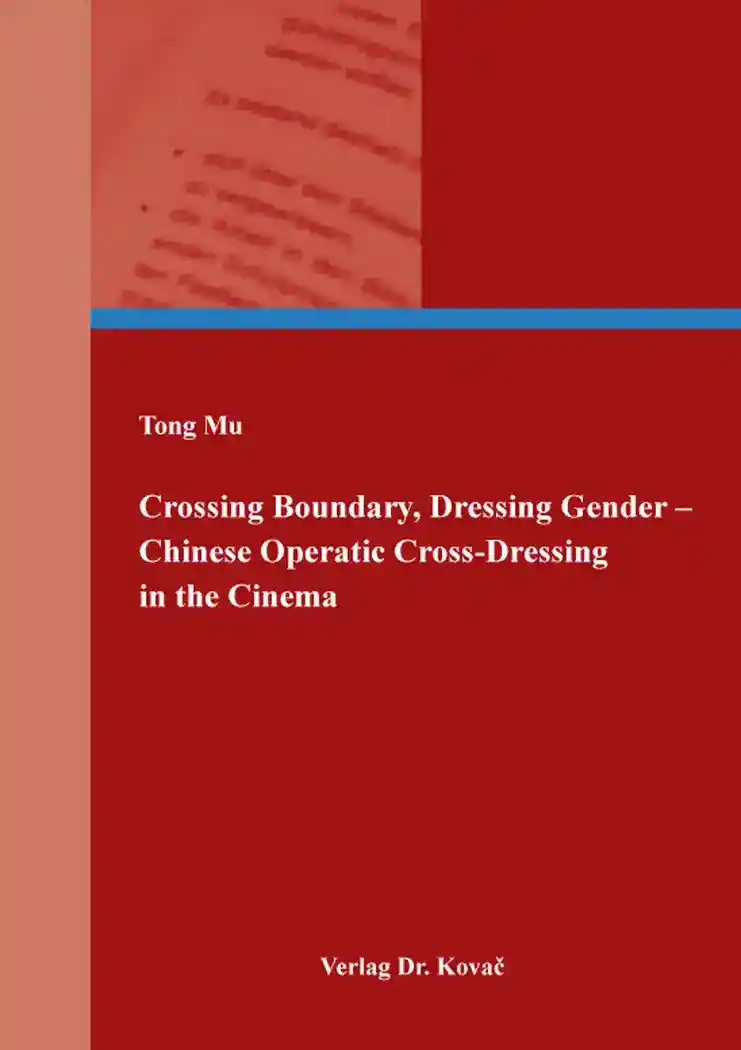Tong MuCrossing Boundary, Dressing Gender – Chinese Operatic Cross-Dressing in the Cinema
– in englischer Sprache –
Gender Studies – Interdisziplinäre Schriftenreihe zur Geschlechterforschung, Band 38
Hamburg 2023, 256 Seiten
ISBN 978-3-339-13174-4 (Print)
ISBN 978-3-339-13175-1 (eBook)
Zum Inhalt
The book attempts to examine the cultural practice of Chinese operatic cross-dressing in the cinema. It focuses on operatic cross-dressing in films from the 1980s and 1990s.
Although these representations of cross-dressing follow traditional gender norms, their subversive functions against patriarchal and heterosexual domination are playing more and more significant roles.
In chapter 1, the theoretical foundation for my analysis was laid, including an explanation of some of the terms used in gender studies and how they might be applied to the ideology of sex and gender in Chinese history. Judith Butler’s theory occupies a central position in the theoretical foundations. Her analysis of American drag queens on screen is a particularly useful example of her reflections on gender’s performative quality and paves the way for an investigation of cross-dressing performance. However, gender identity should be examined on its own terms and within its specific historical and cultural background.
Chapter 2 considers the cultural contexts of cross-dressing in Chinese theatre, the history, aesthetics and cultural motives of Chinese operatic cross-dressing. There has been a long tradition of cross-dressing in Chinese theatre. Male impersonation in Beijing opera is considered as significant feature of Chinese opera as a whole. And the enchantment of the female impersonator remains a stubborn residual element in the cultural imagination in contemporary society. Apart from the much-discussed art of the female impersonator in Beijing opera, there is also the unbroken theatrical tradition of female cross-dressing in Chinese opera.
Chapter 3 investigates the history of cross-dressing films and discusses the aesthetics of this film genre, focussing in particular on operatic cross-dressing in Chinese opera films and melodrama films. Operatic cross-dressing in Chinese theatre history can be regarded as an unstable cultural element, paradoxically maintaining and destroying gender binarism. And the Chinese films investigated in this dissertation epitomize the traditional aesthetics of Chinese operatic cross-dressing.
Apart from the discussion of Chinese films, some Hollywood films involving cross-dressing performance are also examined. Both Chinese and Hollywood films have a dual, contradictory nature in terms of gender. They simultaneously reinforce and deconstruct heterosexism and hegemonic binary gender notions.
The case studies in Chapters 4, 5 and 6 present an in-depth analysis, based on these theoretical foundations and within this historical-cultural framework, of two Chinese films and one Hollywood film.
